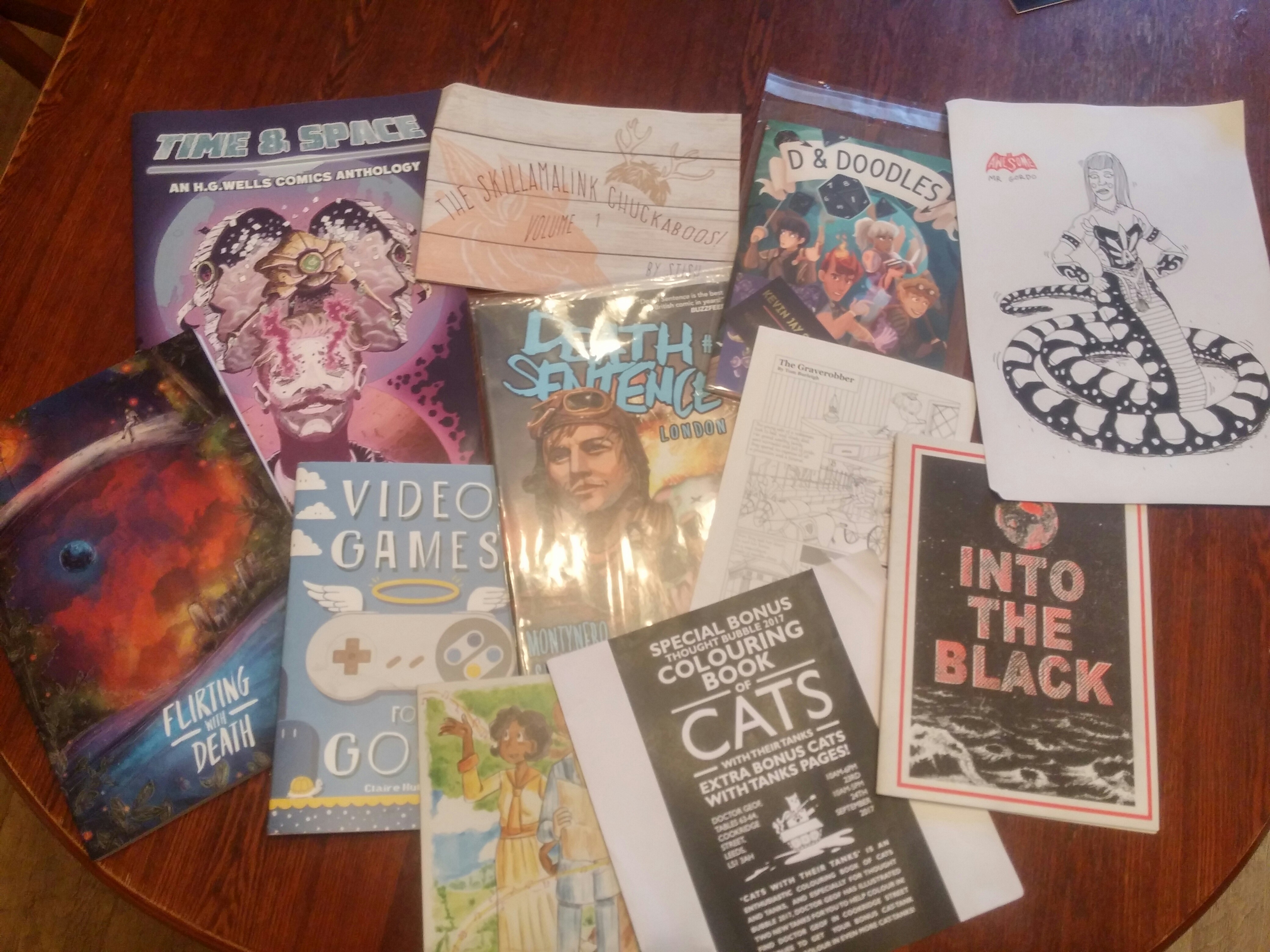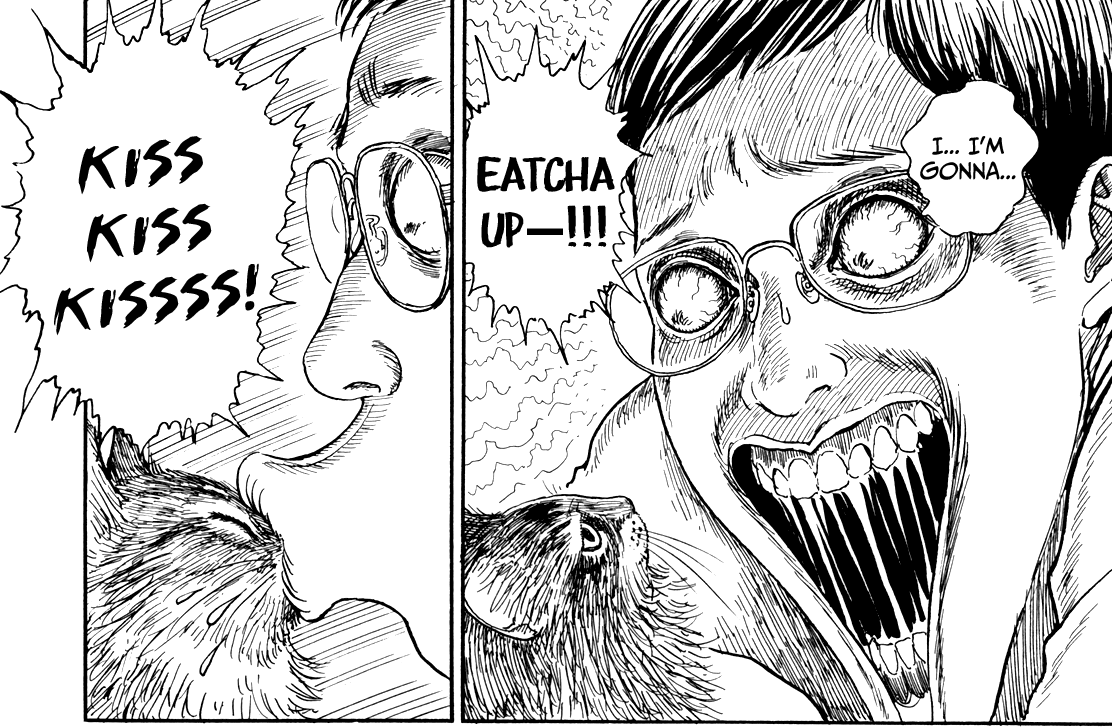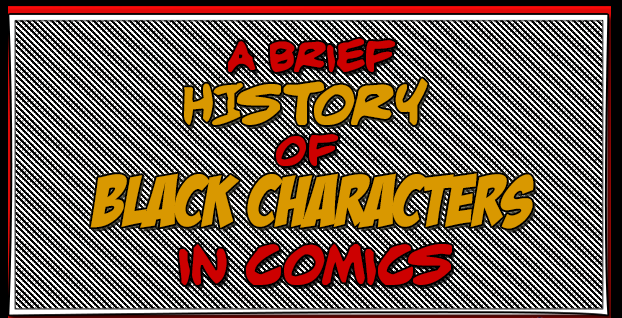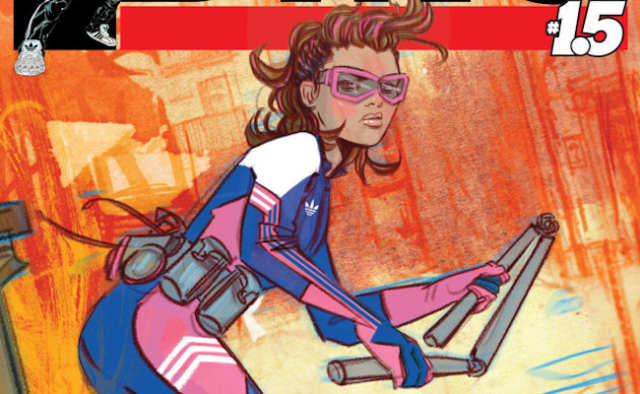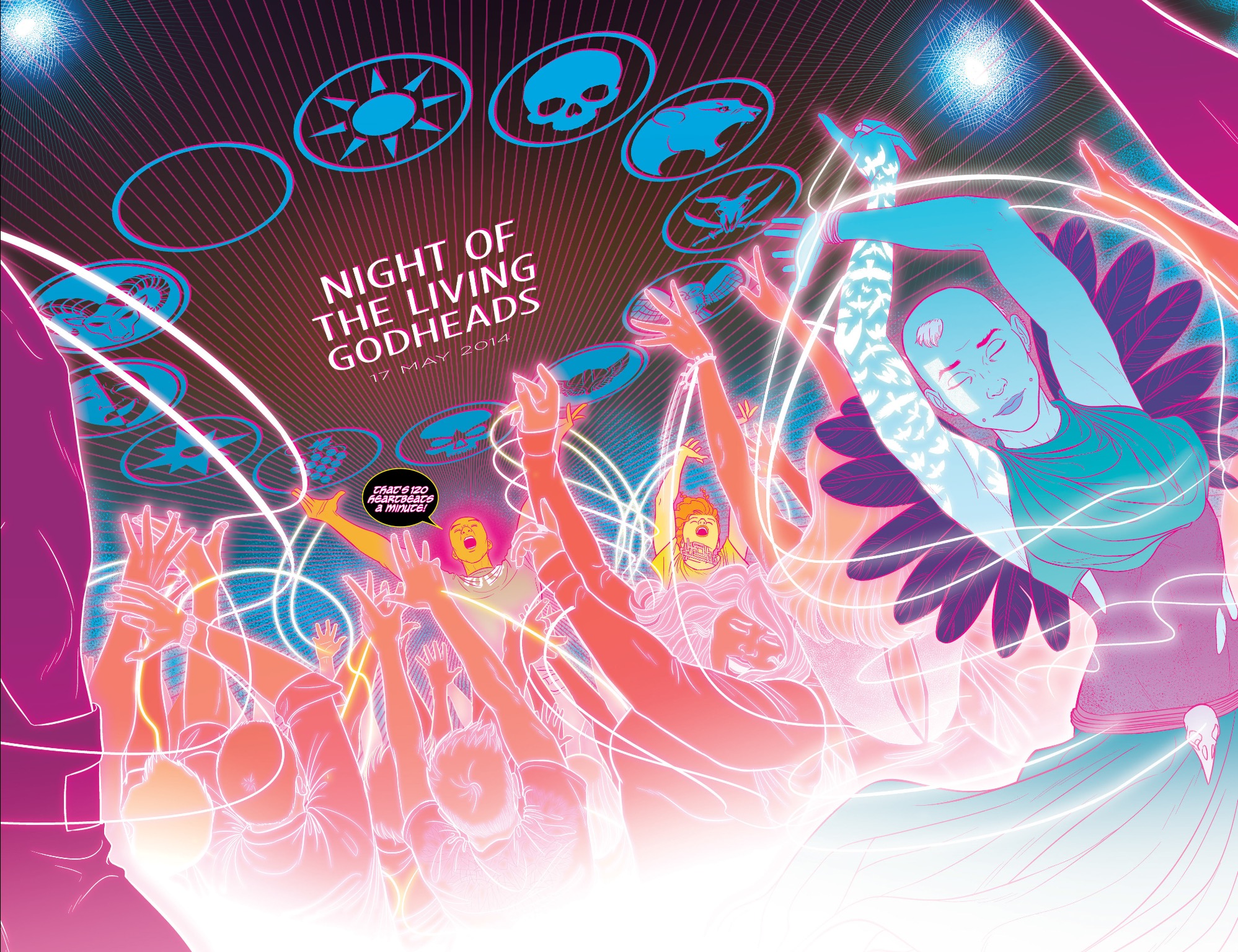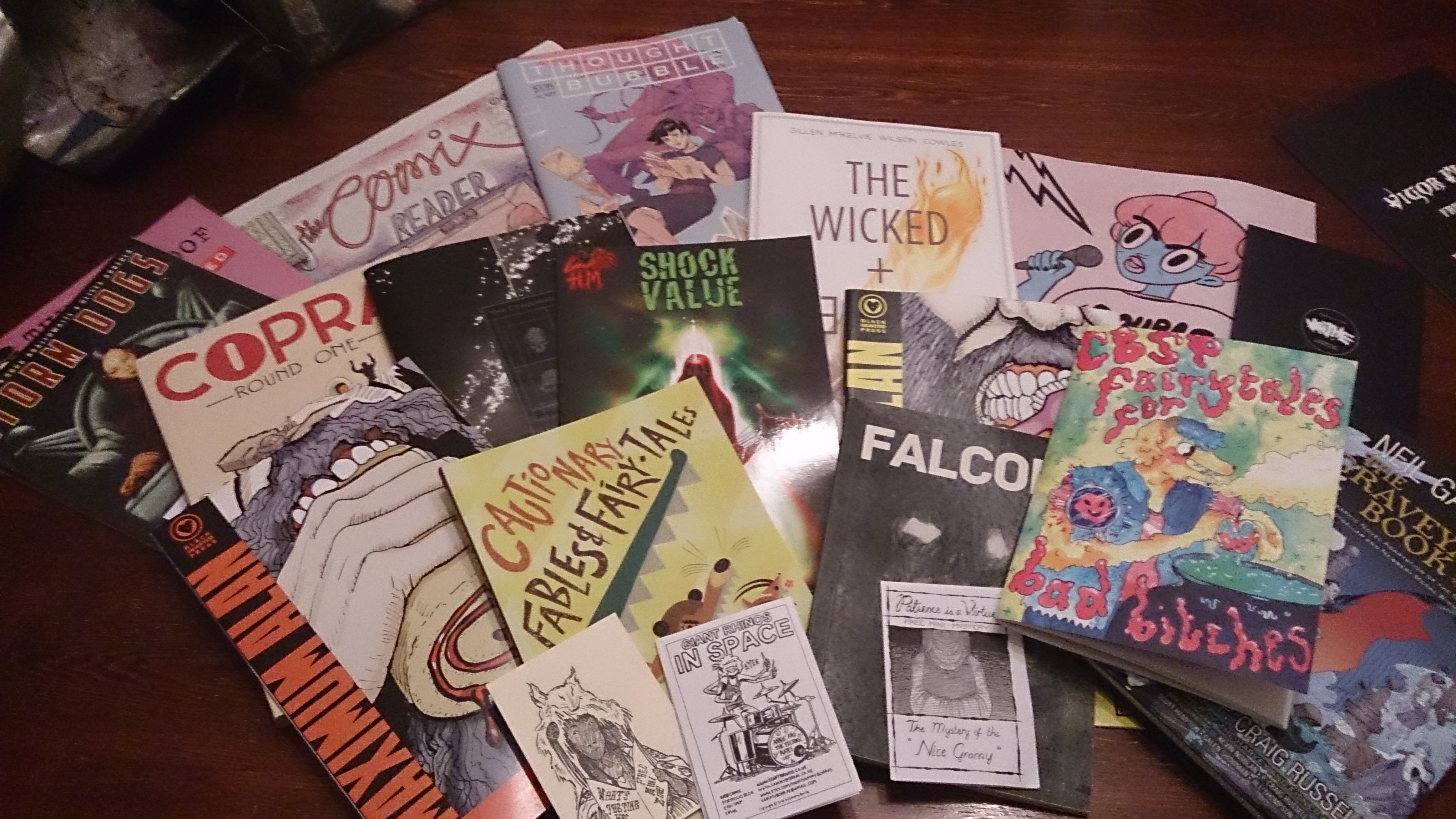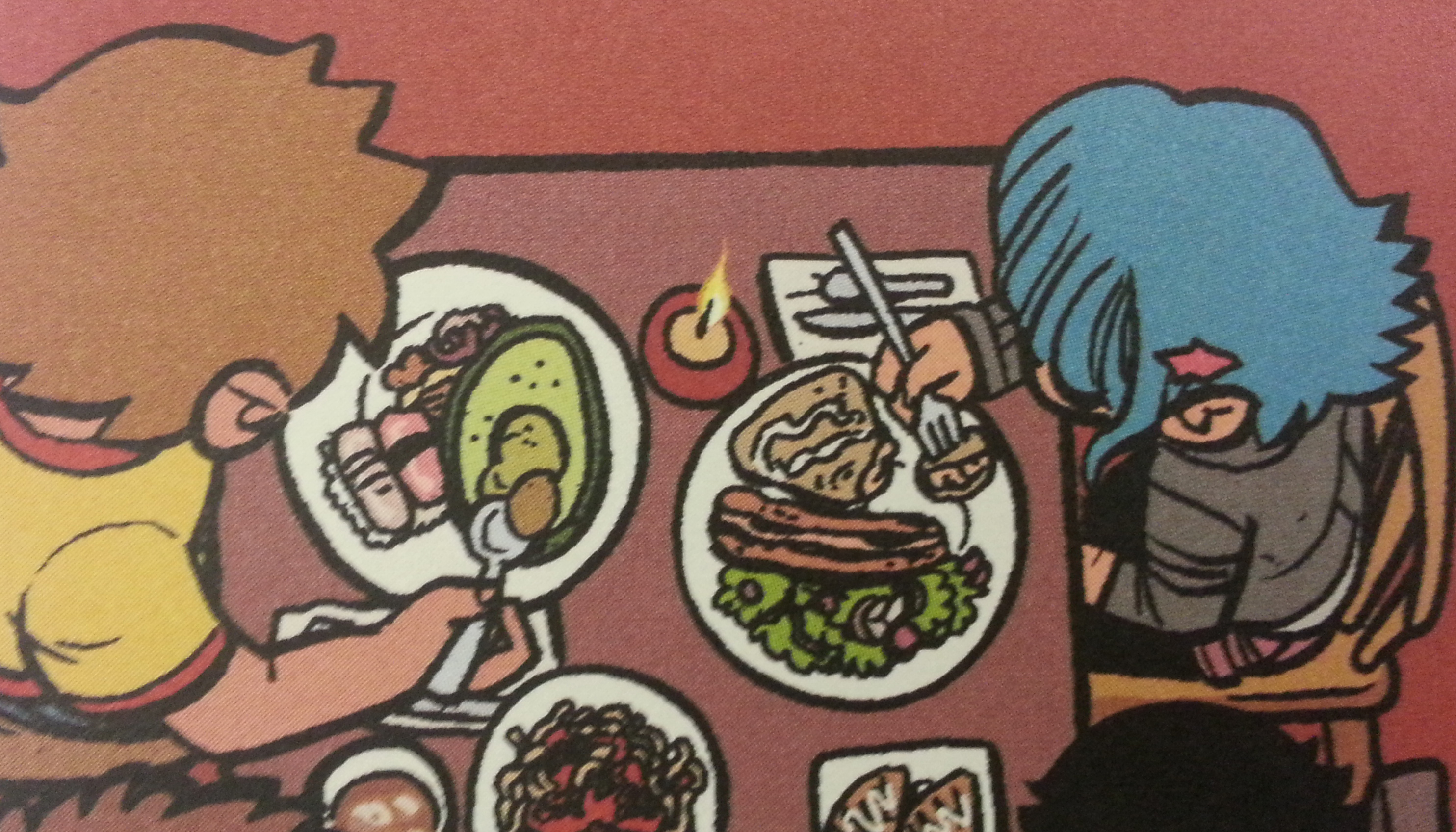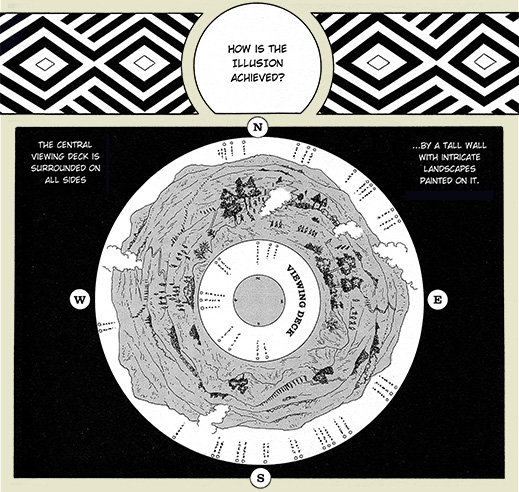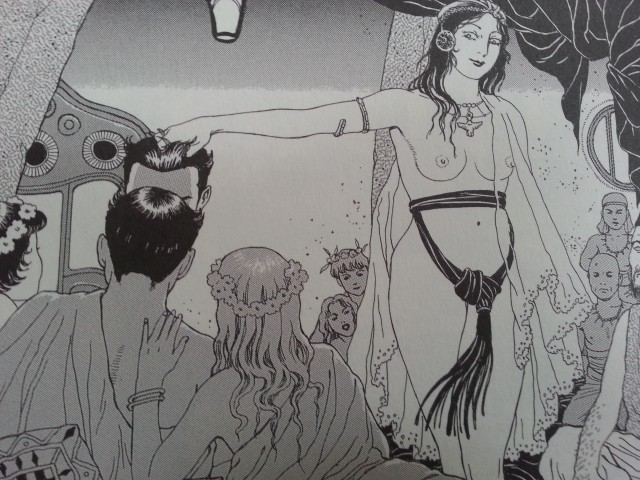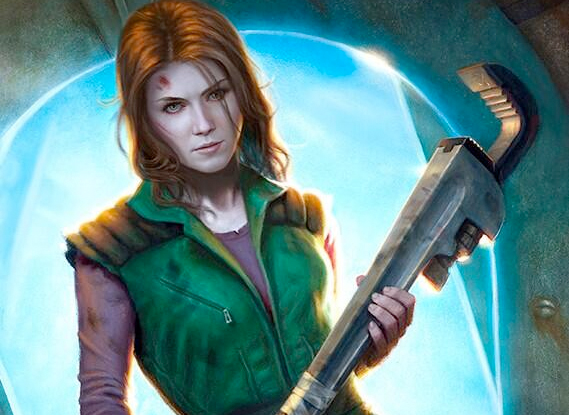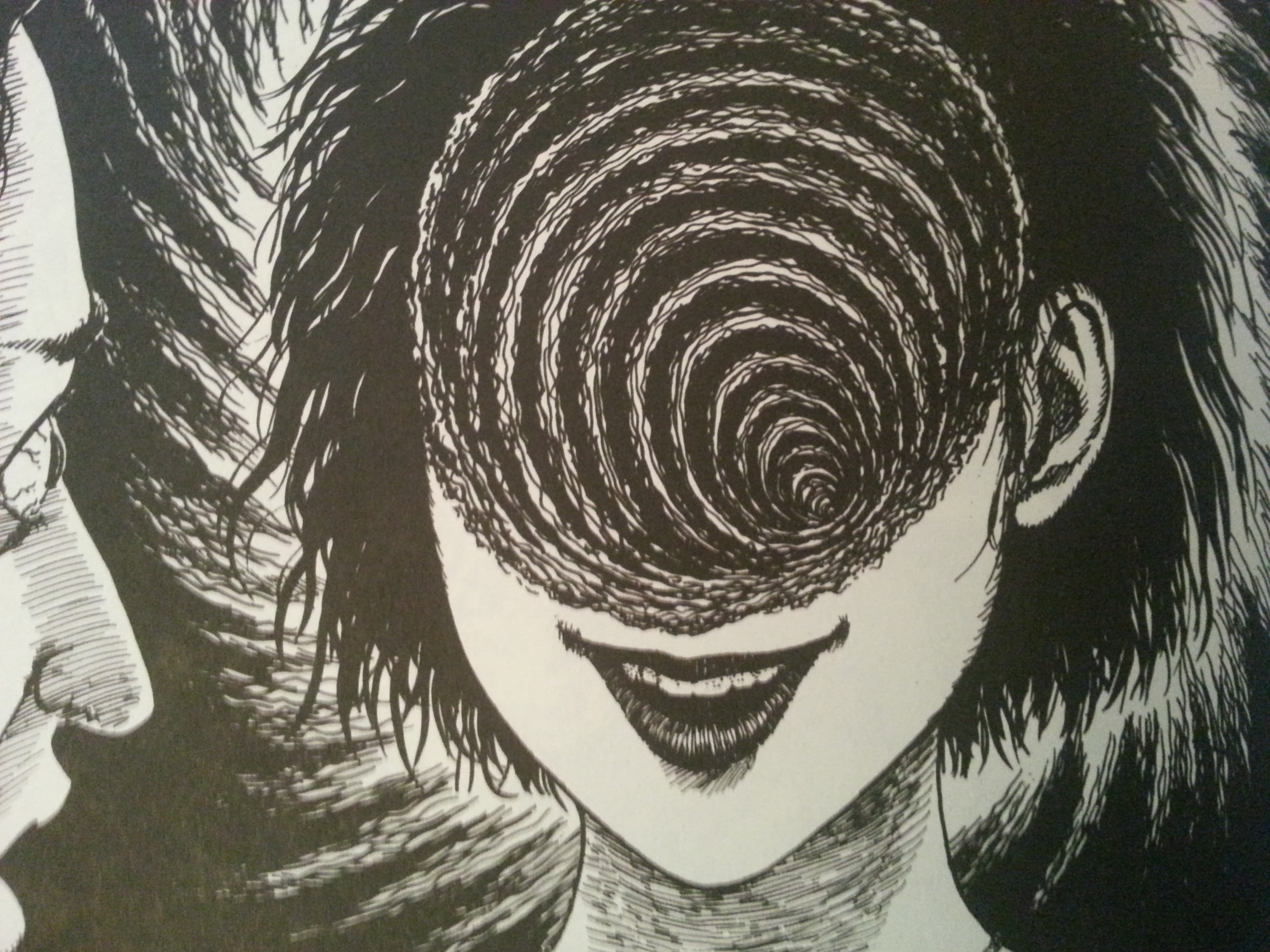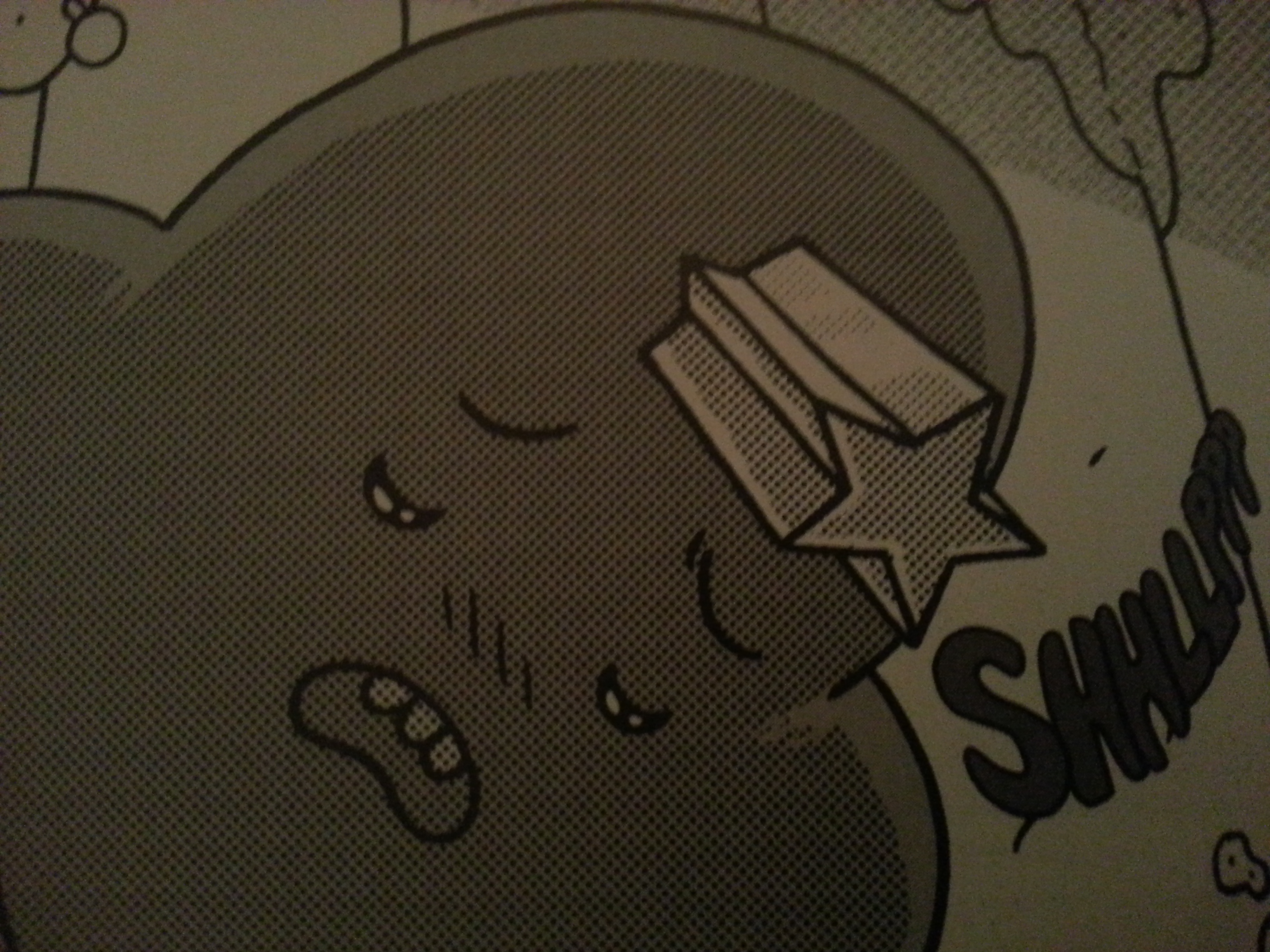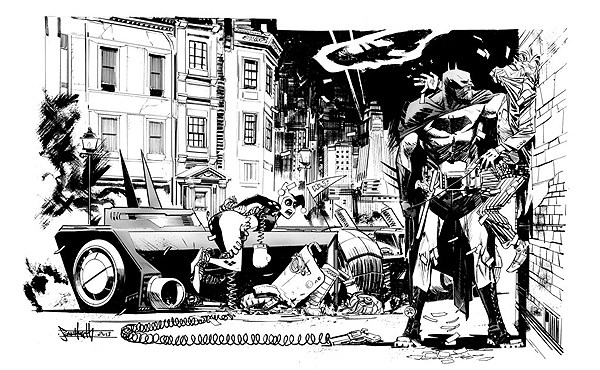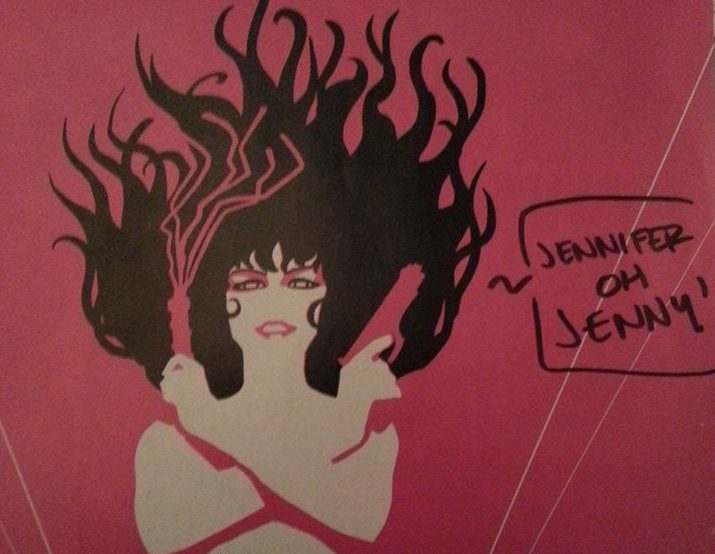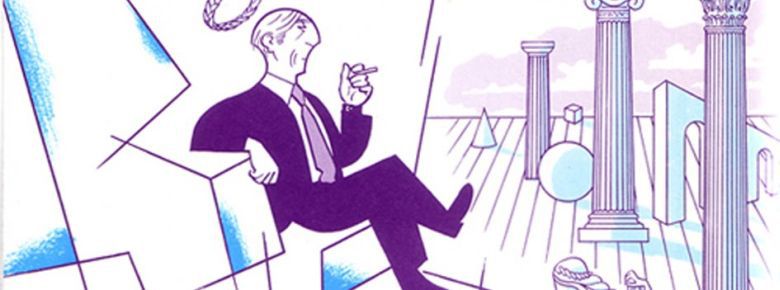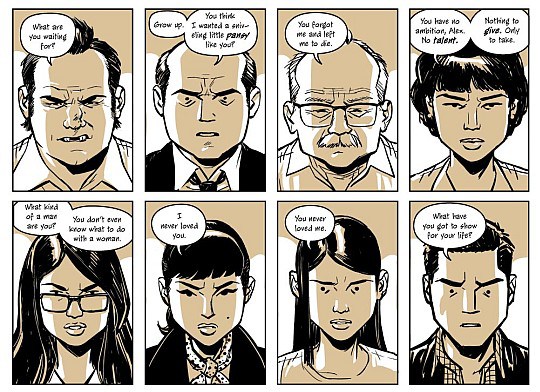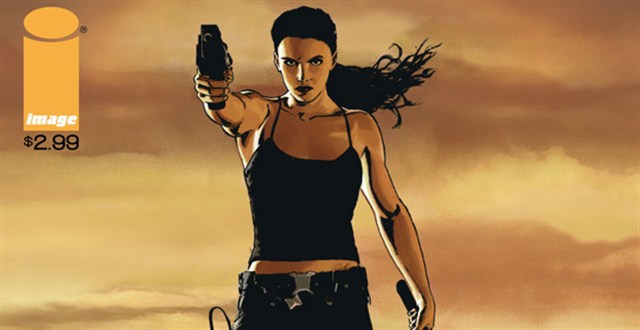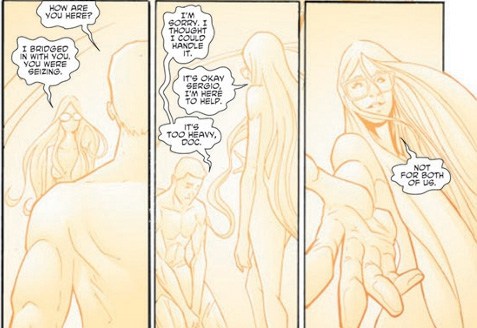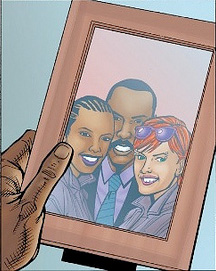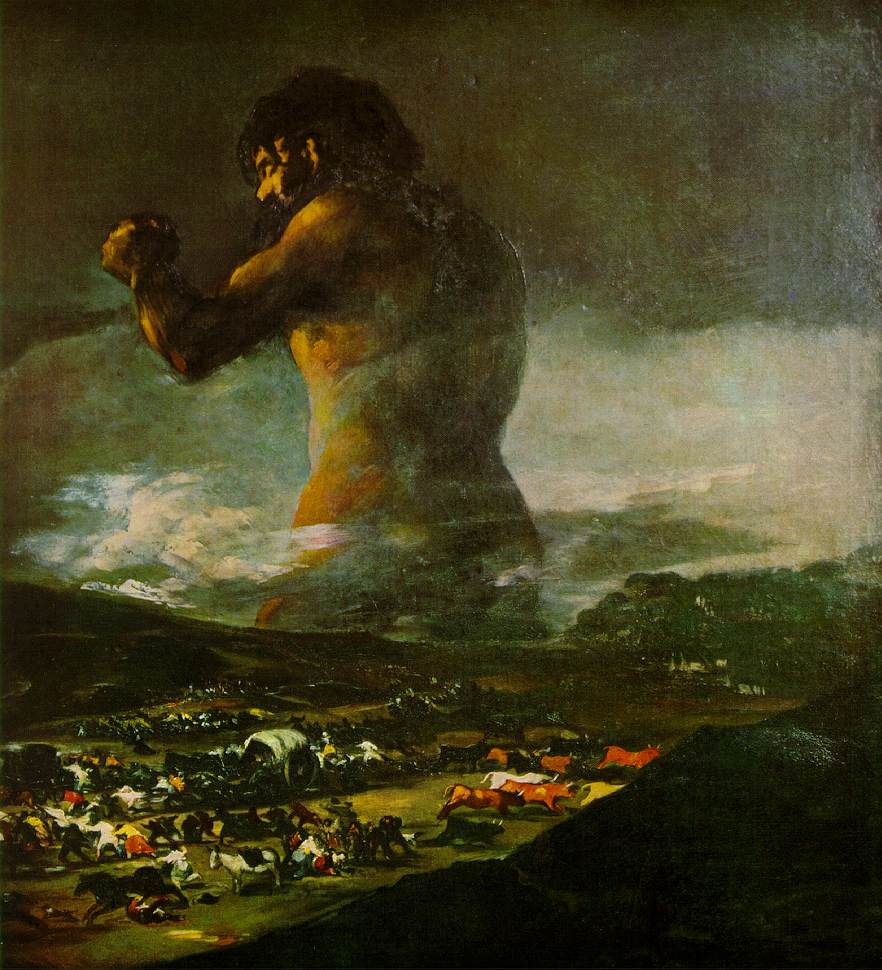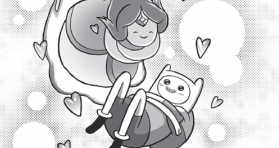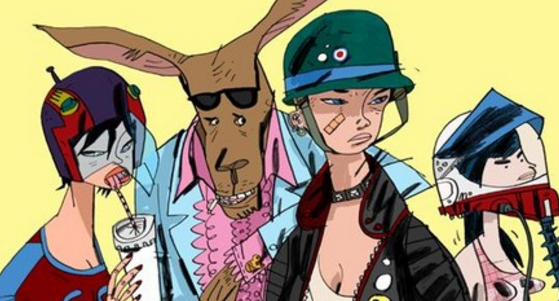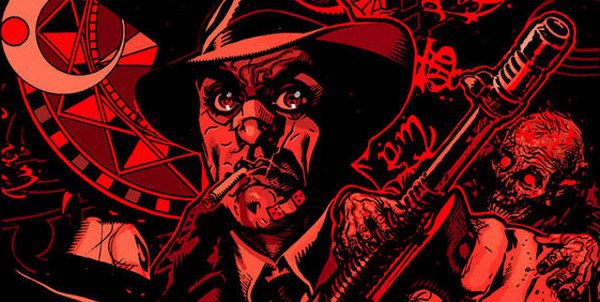It’s the end of November and, once again, Thought Bubble was a roaring success. Perhaps no bigger than last year, it had some noticeable differences in organisation that went down both positively and negatively, depending on who you’d talk to.
The most obvious change was the introduction of the marquee in the centre of the convention space. Immediately, you’d think that this had increased the size of the convention, although comparatively it was probably about the same size as last year’s extra room. The advantages, however, were that a marquee is a lot easier to keep warm than the hollow bare-brick wall. Also using the central space for the major signings (people you knew would be busy, like Scott Snyder and Jock) meant that the New Dock Hall wasn’t completely full of seemingly endless queues. The downside to that was having to queue outside, in November. Still, you can’t have it all.
Fortunately the weather held and we barely saw a drizzle of rain – I expect there was great thanks from the cosplay crowd, of whom there were an incredible amount this year. I’m not sure how but it seems that every year I think I must have seen all of the costumes, until I see the post-con pictures and wonder how I could possibly have missed the adorable child in the jumpsuit with a Portal gun.

Post-Con Swag
Other than that, it seemed like business as usual at the convention, which was great. There seemed to be a few things that fell through – the Diversity in Comics panel wasn’t racially diverse, for instance, but more on that later – although nothing ground to a halt. When you’ve been to Thought Bubble a few times you begin to see the patterns of exhibitors – you always know Dr Geoff is going to be there, and the Romantically Apocalyptic crew.
As a socially awkward person, I don’t always revel in being brought into conversations at exhibitor stalls, but I did have a few wonderful chats this year with independent artists. While not independent, my favourite talk was probably with David Hine, whom I queued for patiently to have Storm Dogs signed last year, but whose desk was virtually empty this year. We had a fantastic discussion about his book The Man Who Laughs, the origins of the Joker and the private life of Victor Hugo. These are some of my most treasured moments of Thought Bubble, when I can geek out on something that excites me with someone who’s managed to make something awesome.
The talks seemed hugely popular this year – several that I tried to attend in the Bury Theatre had snaked back to the door and then doubled in length again, and the line for the Gotham talk had been hopelessly long, which was a shame. The ones I did attend were pretty great though; the first of which was one of my favourites, The Best Thing I’ve Read All Year, which was alternatively dubbed “The White Bearded Man Panel” thanks to a few guests falling through. At least they were aware of it!
This is the best place to get recommendations, and I walked away with a whole bunch. Huge thanks go to Tom from Gosh Comics for recommending the Comic Book Slumber Party table, and specifically the Fairytales for Bad Bitches anthology which was read on the Saturday night and gratefully enjoyed. Supreme Blue Rose was another big push, and of course The Wicked and The Divine, which just won the British Comic Awards prestigious Best Comic award.
Other potential highlights – which have either been positioned on my radar or gone onto my Christmas list – included The Salt Lakes by Matt Taylor, a translation of three Japanese history comics for which I can’t remember the name, Beautiful Darkness, a new Stray Bullets, The Wrenchies and the upcoming Ody-C, z gender-swapped sci-fi version of the Odyssey which I cannot wait to get my grubby mitts on. I’m going to be poor for quite some time.
It was a good laugh of a talk though, and the suggestions were great. I was particularly pleased that riot grrrl comics were being actively promoted! The riot grrrl anthology is now sat on my bookshelf, screaming to be read. In time, my beauty!
For the second year of Diversity in Comics, there maybe could have been a bit more diversity – both from last year as well as in general. Howard Hardiman was in attendance again, the self-professed “gay cripple” who penned the excellent The Lengths which I snatched up last year after hearing him talk. I also noticed for the first time this year that he has a fantastic puzzle piece tattoo all over his lower arm – love it. He also showed a segment from one of his new books about a sleepy badger, where the titular badger comes across a black, disabled lesbian, which was a fantastic nod.
Unfortunately the panel was overwhelmingly white this year, largely because Barry Nugent hadn’t been able to come. He was fantastic at the talk last year but I couldn’t help thinking, with the increased amount of non-white exhibitors I’m beginning to see in the halls, they might have been able to get someone else. Donya Todd was charming though, and from my South-West neck of the woods, so I was pleased to find that I had already picked up her work in the riot grrrl anthology.
There were some great recommendations, including a seventies feminist publication called Spare Rib, and great women in comics like Suzy Varty, Trina Robbins and Eileen Crumb. We also discussed the problems when it comes to complaining about events like Thought Bubble and making them more accessible – I’d be curious to see if there are many negative reactions and how they are dealt with.
The Self Made Hero British graphic novelists talk was another great one, with the master of Cthulionic adaptations INJ Culbard joined by the creators of Ricky Rouse Has A Gun, which is another on my ever-growing Christmas list. I had already bought a series of grotesque cyberpunk postcards from John Aggs who describes Ricky Rouse as a “dumb book”, so was quite excited to see them talk about this piece that had been making waves for some time.
Finally, the only other panel I was able to make it to was the Journalism in Comics talk. The biggest topic of conversation was that of criticism, which was very interesting – we heard from Douglas Wolk, who prides himself on critical journalism, and Zainab who, like me, would rather be positive. Like her, I also shy away from giving negative reviews, being too aware that the subject could be reading it, although for someone in Douglas’s position this isn’t a luxury he can afford. I suppose it’s also about where you feel your responsibility lies – with the consumer, or with the creator of the work.
Again, the panel might have been a little better chosen. With only four panelists (including the moderator) it seemed out of place for one of them to barely do any comics journalism. Unfortunately music journalism doesn’t really translate as easily, and her comments – while insightful – felt out of context.
All in all, Thought Bubble still reigns supreme in the comic book festival circuit, especially as more and more conventions are going toward more mainstream media forms. Yes, Jason Momoa is very attractive, but comic book icon he is not – give me Tim Sale any day!
Finally, my weekend was made by meeting one of my personal heroes, Danielle Corsetto, and having her doodle in the copies of Adventure Time that I reviewed here and here.
So thank you once again Thought Bubble for the laughs, the inspiration, and the severely depleted bank account funds. I’m looking forward to next year already!



